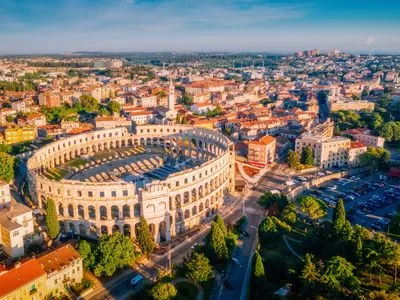

Already cited by Greek authors during their time, the town of Pula grew progressively during the Roman occupation. Roman vestiges are omnipresent throughout the city. The amphitheater, built under Augustus, is the country’s best-preserved ancient monument and one of the world’s sixth-largest Roman arenas still standing. The amphitheater hosted gladiator and wild-animal combats for 24,000 spectators up to the 5th century AD. Today, it serves as a stage for festivals and concerts, including the famous Pula Film Festival. During this guided tour, you'll also see ancient and medieval ramparts such as the 2nd-century Porta Gemina, the Gate of Hercules—the oldest Roman vestige in the city—and the Arch of the Sergii. Other Roman ruins include the ancient Forum and the adjacent Temple of Augustus and the magnificent Communal Palace.
PLEASE NOTE

Already cited by Greek authors during their time, the town of Pula grew progressively during the Roman occupation. Roman vestiges are omnipresent throughout the city. The amphitheater, built under Augustus, is the country’s best-preserved ancient monument and one of the world’s sixth-largest Roman arenas still standing. The amphitheater hosted gladiator and wild-animal combats for 24,000 spectators up to the 5th century AD. Today, it serves as a stage for festivals and concerts, including the famous Pula Film Festival. During this guided tour, you'll also see ancient and medieval ramparts such as the 2nd-century Porta Gemina, the Gate of Hercules—the oldest Roman vestige in the city—and the Arch of the Sergii. Other Roman ruins include the ancient Forum and the adjacent Temple of Augustus and the magnificent Communal Palace.
PLEASE NOTE